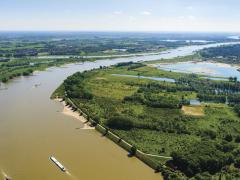Seizing the landscape opportunity to catalyse transformative biodiversity governance
As negotiations continue on biodiversity action for the next decade, now is the critical moment to seize the opportunity for embedding a landscape perspective throughout the new UN Convention on Biological Diversity (CBD) post-2020 Global Biodiversity Framework (GBF). While nature and biodiversity are being lost worldwide, and the capacity of ecosystems to provide vital contributions to people is deteriorating, there is a clear need for transformative change to move away from business-as-usual pathways in managed landscapes globally. A key for unlocking transformative change towards nature-inclusive development that involves whole of society is provided by landscape governance arrangements, ongoing landscape initiatives and connected international networks.

Creating co-benefits between SDGs, climate, restoration and biodiversity ambitions
The need for more integrated and inclusive management of natural resources in the post-2020 GBF, also resonates with the Sustainable Development Goals, the UN Decade on Ecosystem Restoration and ambitions to mitigate and adapt to climate change. Nature is considered part of the solution, reflected by an increasing global interest in restoration and nature-based solutions (NBS). This makes a landscape perspective even more crucial to support the effective and equitable realisation of much-needed co-benefits.
Many landscape governance initiatives are leading the way; the CBD can benefit
The many emerging landscape initiatives provide tangible examples of how multiple landscape values can be combined to achieve better outcomes for people and nature. Many landscape initiatives are connected to international networks and platforms facilitating a better connection between global commitment and local action, sharing of knowledge and experiences. International biodiversity policies and the CBD can benefit from these efforts. These networks could also increase their attention for operating in multi-level and multi-actor governance processes that are needed to align objectives at various levels of governance.
The way forward for the Global Biodiversity Framework; embedding a landscape perspective
There are several opportunities for embedding a landscape perspective in the post-2020 GBF. In the CBD, spatial planning and landscape governance are so far mainly seen as a means of implementation and part of a ‘whole of government’ approach. Due to this lack of attention, the post-2020 GBF misses out on the potential of bottom-up landscape governance and initiatives to support a ‘whole of society’ approach and to develop pathways to move to more bottom-up and participatory spatial planning and more inclusive ways towards achieving biodiversity goals and ensuring nature’s contributions to people.
A Global Biodiversity Framework that triggers landscape action
A key element that is clearly mentioned in the theory of change of the GBF is that the implementation will be done in partnership with many organisations, on global, national and local levels. Effective landscape governance does entail the participation and cooperation of stakeholders at the local level of policy implementation. This includes indigenous peoples and local communities and directly speaks to the GBF targets of ensuring equity, protection of associated traditional knowledge and rights over resources as well as to the GBF implementation support mechanisms and enabling conditions. The GBF could recognise that also the realisation of many of the other targets will rely largely on landscape-level action and better spatial planning
Building on landscape ambition as part of the Action Agenda for Nature and People
Integrating a landscape perspective in the theory of change and throughout the GBF will help to raise the level of ambition of landscape-level action for nature and people. To facilitate this a number of umbrella organisations with global outreach have become important actors in increasing the momentum for landscape thinking and acting. The GBF could benefit greatly from their work and the Action Agenda for Nature and People would provide an opportunity for doing so. Stronger involvement, recognition and commitments by landscape initiatives and their network organisations would add value to this process and contribute to a feasible and impactful way forward.
Authors
Specifications
- Publication title
- Seizing the landscape opportunity to catalyse transformative biodiversity governance
- Publication subtitle
- A contribution to the CBD post-2020 Global Biodiversity Framework
- Publication date
- 30 July 2021
- Publication type
- Report
- Page count
- 36
- Publication language
- English
- Product number
- 4441




